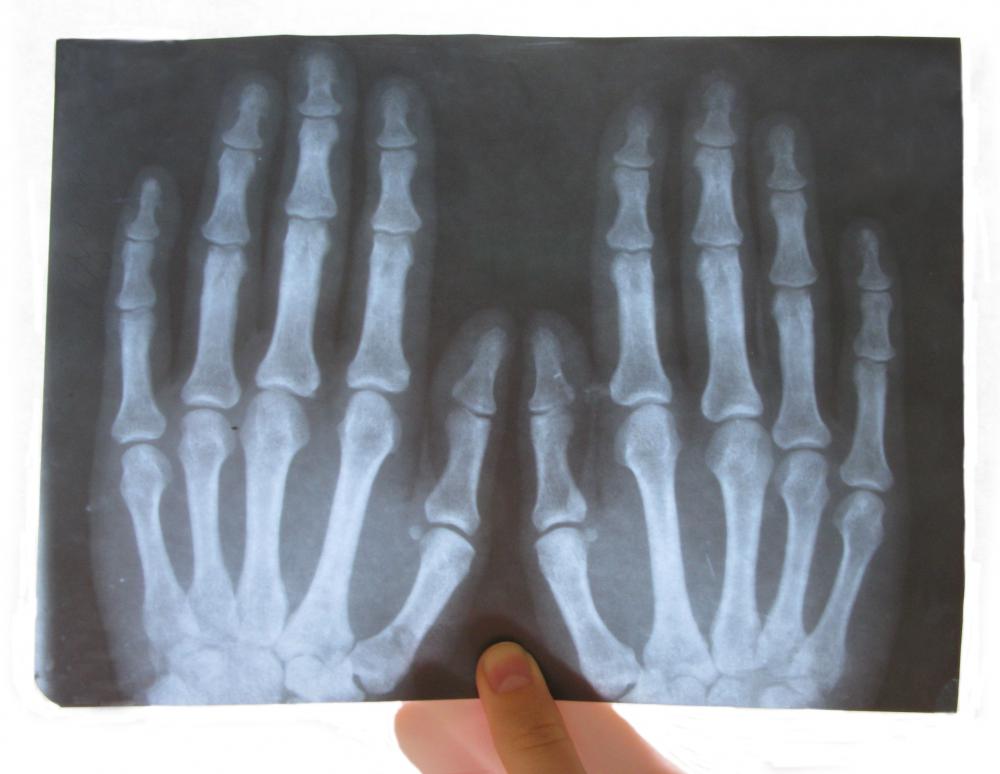At TheHealthBoard, we're committed to delivering accurate, trustworthy information. Our expert-authored content is rigorously fact-checked and sourced from credible authorities. Discover how we uphold the highest standards in providing you with reliable knowledge.
What Are Intercarpal Joints?
Also known as intercarpal articulations, intercarpal joints are joints between the carpal bones of the hand. Situated just beyond the radiocarpal or wrist joint, this collection of eight irregularly shaped bones helps to transfer forces across the wrist joint and into the hand, allowing for complex hand movements. Intercarpal joints are classified as arthrodial, or plane, joints, which permit the bones to slide past one another in a variety of directions. In the carpus, these joints allow simultaneous movements of the bones relative to one another during grasping, stretching, and other hand actions.
At the base of the hand, between the five metacarpal bones in the palm and the radius and ulna bones in the forearm, are the eight bones of the carpus. These tightly-packed, rock-shaped bones include the scaphoid, lunate, triquetrum, pisiform, trapezium, trapezoid, capitate, and hamate. They are roughly arranged into two rows, with that nearest the wrist joint referred to as the proximal row and those nearest the metacarpals in the hand referred to as the distal row. In the proximal row are the scaphoid, lunate, triquetrum, and pisiform bones, while the remaining four are found in the distal row.

The intercarpal joints include those between the bones of the proximal row, those between the bones of the distal row, and those between the two rows. These joints are largely covered in short, strong ligaments made of thick collagen fibers holding the bones together. Within each row are dorsal, volar, and interosseous ligaments: those linking the bones on their dorsal or rear surfaces, those linking the bones on their palmar surfaces, and those between the adjacent surfaces of bone, respectively. Between the two rows are the midcarpal ligaments, which are perpendicular in direction to the ligaments found within the two rows. All of the intercarpal bones hold the carpus together so that it may function as a unit as well as transfer forces across bones between the wrist and hand.

Between the bones of the carpus and intrinsic to the intercarpal joints is the synovial membrane. Most of the body’s movable joints contain a membrane-lined synovial capsule between the adjoining bones. Within this capsule is the fluid that lubricates the bones against one another and some form of cartilage that acts as a cushion. In two-bone joints like the elbow and knee, the synovial capsule is rather simple, contained, and sac-like in shape.
At the intercarpal joints, by contrast, the synovial membrane is more complex and oddly shaped. It runs linearly between the two rows as well as forms projections, prongs that extend between the bones of either row. The membrane of the intercarpal joints protects the joint cavity, releases lubricating synovial fluid to reduce inflammation between the bones during hand movements, and provides a buffer that keeps the bones from making direct contact with one another.
AS FEATURED ON:
AS FEATURED ON:












Discuss this Article
Post your comments